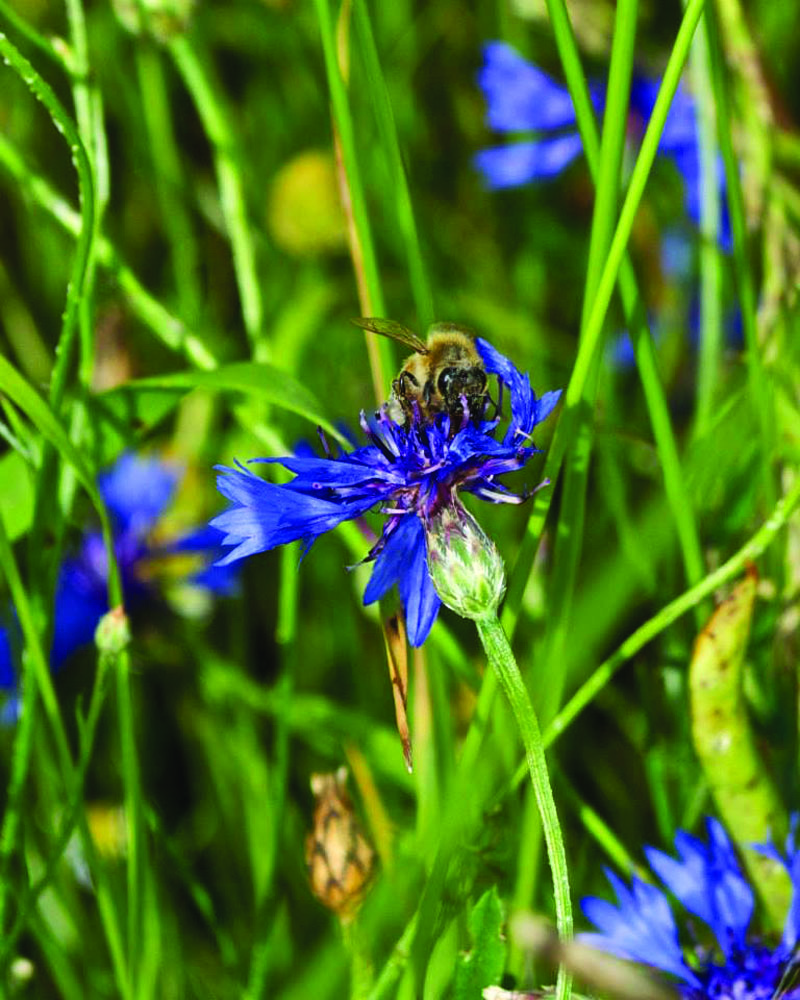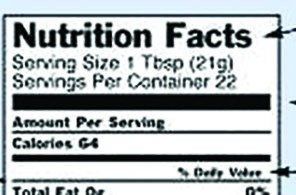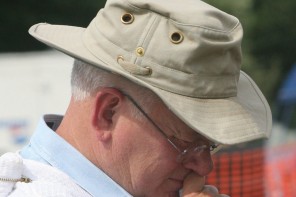Blue Moon
by Jessica Louque
Blue is my favorite color. Unfortunately, it’s not always nature’s favorite color. Either that or nature really loves blue and is a hoarder so nobody else can have it. This year we have decided to circumvent nature to the best of our abilities and go blue on our own. Hopefully by the end of 2016 you’ll be reading an article about our ridiculous success with blue. Otherwise you’ll be reading an article about my ridiculous propensity to buy seeds and epic failure at the color blue.
Only once in a blue moon do you ever see pollen that might could possibly even be considered blue. There’s always a vast array of the far end of the rainbow, with cream, yellows of all shades, gold, orange, and even the decent mixing of reds when the henbit is in bloom. There’s even a good smattering of greens and grays. Rarely do you see blue or purple pollen coming in with the girls. This year, that’s about to change at the Louque house.
We usually go through plant withdrawals in the winter, and spend ridiculous amounts of money buying seeds that we may or may not have enough room to accommodate in the yard. It’s usually heavy towards the vegetable side, but I love to have flowers everywhere too. They take less effort and it makes me feel like I’m feeding the bees (that’s my excuse anyway). For the 2015 Christmas, Santa brought us a bunch of seeds that should make flowers with blue pollen.
As scientists, we see a lot of false information about a variety of aspects in the bee world. There is a lot of speculation in some areas that are really neat because they aren’t important enough to warrant funding. Knowing which plants produce what color pollen is really cool, but is not particularly important in the long run for bee health because you can’t specifically identify the origin after its in the hive without your friendly palynologist on standby. To pick the choices, we basically went through all the photos, theories, and probable sources of what might produce blue hued pollen. Some plants that were identified are probably just blue flowers, but some do have the highly sought after blue. For the most part, all of these seeds were available at outsidepride.com. There is a pretty large range of seeds available on their website, and if the quality of these seeds is what I’m expecting, then they will have a repeat customer.
I didn’t realize that chicory produces blue pollen, but it seems to be the general consensus. We have a quarter pound bag of chicory that is ready to be planted as soon as the North Carolina weather settles down into a friendly spring-like range. Let’s be honest – in North Carolina that nice weather will probably be the last two weeks in May before the scorching drought hits in June. I’ll go with optimism on this idea and hope for consistently nice weather in early April.
In the other larger quantities, we purchased borage and cornflower. Even if these somehow don’t produce blue pollen, they are definitely bee attractive. I feel like they should both have blue pollen, just based on the flower color, but that’s a horrible assumption since that’s not a thing that normally happens. Based on our seed packets though, it looks like only bluish flowers produce blue pollen. I think I’ve seen cornflower pollen before, but I thought it was a light yellow or cream color, but I do have a lot of pictures of bees on the flowers. This experiment could be great for photo ops.
The next possibility is hyssop. We will be trying out the Hyssop officinalis as well as the giant hyssop, Agastache mexicana to see if it makes a difference. They are both a pretty purple color, but I am not familiar with their inner workings on a bee-eye level. These are only in a 1,000 seed packet, nothing major. Another plant in the “possible” section is lupine, Lupinus perennis. The lupine, along with Chinese forget-me-not (Cynoglossum amabile) and Eryngium “Blue Glitter” (Eryngium planum) are really my only three high probabilities for blue pollen that came from Johnny’s Seeds. Normally, they are my go-to for seed buying, but they are not on board with the anti-diversity blue campaign.
We are going to try to grow phacelia, since it definitely has blue pollen. The lacy phacelia does not grow well in this area, but we’re hoping to plant it with a lot of compost and organic matter in the soil and hope for the best. I have grown desert phacelia before, but it is so delicate that our thunderstorms will rip the flowers off the plants. Unless I am mistaken, I believe the Globe Thistle (Echinops ritro) is another guaranteed blue pollen plant. Viper bugloss, Echium plantagineum, and Blue Angel bugloss, Anchusa capensis, have lots of reported blue pollen sightings, so we’ll throw them into the “definitely” category even if it may not be true.
My friend Tom sent me some pictures outside of his office of bees on a weird blue bush covered in electric blue pollen and asked what it was. I had no idea so I completely ignored his email until I could smugly tell him well of course that’s Bluebeard how could you not know? Caryopteris is a decent sized bush that is covered in blooms and produces deep blue pollen. GreatGardenPlants.com sells them for about $14 per bush and you can’t get them in seed form. They are supposed to be drought tolerant, deer resistant, and fairly easy to grow in zones 5-9. The true test with this bush is the deer resistance. If it has all of these qualities, there might be an entire front yard of these bushes in the next couple years, or at least circling the garden.
Last but not least is the “probably not but just for science” section. Most of these originate from Johnny’s Seeds, and have something to do with blue, but it might just be the color of the flower. We have:
In a secondary garden of somewhat already established plants, we have the bulbs. Siberian squill was added to the fray, which seems to be a popular choice of blue pollen production. There are also a myriad of tulip bulbs of varying sizes and colors (minis to jumbos) that will hopefully produce black or dark blue pollen. Terrain, an outrageously overpriced side store to Anthropologie (also outrageously overpriced but sometimes they have some really cool stuff), started a new line of bulbs this year and I couldn’t resist. Somehow I ended up with four different colors of hyacinth and Bobby politely pretended he didn’t notice the other 8 packets of designer flowers as he admired colors of hyacinth I was previously unaware existed. I don’t know what color their pollen will be, but maybe it will produce pollen similar to the flower color and I’ll have apricot-colored pollen to compliment the blues.
To add to the new collection, we will also be augmenting with our normal standards that include a large planting of buckwheat, sweet yellow clover, crimson clover, and hairy vetch. There’s already a pretty good stand of blue salvia that has some nice blue pollen coming from it as well as a stand of bee balm to keep the ladies entertained. We have a decent amount of Queen Anne’s Lace in the front field, if we don’t mow it, that bring joy to the entire pollinator community and our carrot section of the garden if we forget about it for too long.
I’m not sure if we will really have time to monitor each and every flower type for bee attractiveness and pollen color, or if we will even end up appropriately labeling each plant group with the corresponding name (that happens more than I care to admit, with an internal monologue of “What’s this? It’s nice, but now I don’t know what it is”). I’d like to also make this a two-year project in some cases, with planting in a different area if it looks like it might have been planted in an area not conducive to growth. Some of these will be planted in the orchard row as a cover instead of grass. Coincidentally, this is about 20 feet in front of the hives. My hope is that we can plant in blocks, put a nice plant tag with each section, possibly with a pollen guess just for kicks, and get a couple thousand pictures of bees collecting blue pollen for a Bee Culture front page photo. At the very least, if most of these plants turn out to be bee attractive, then the girls will have a busy Summer and I can at least get a few nice shots of pollen frames in the hives…or there will be a whole lot more organic matter to till back in for next year.







